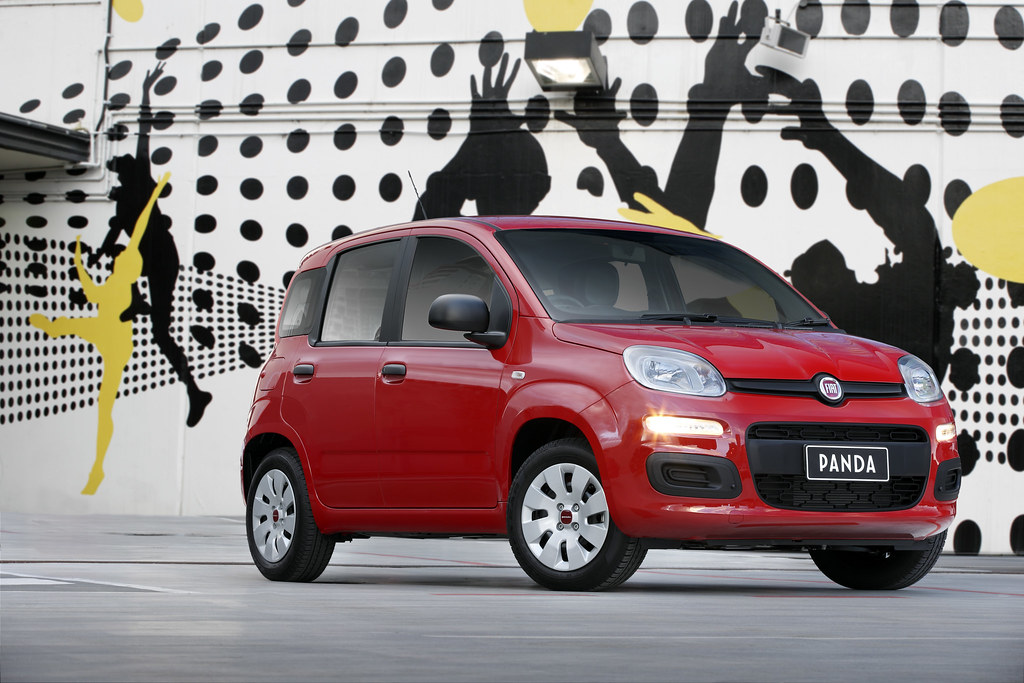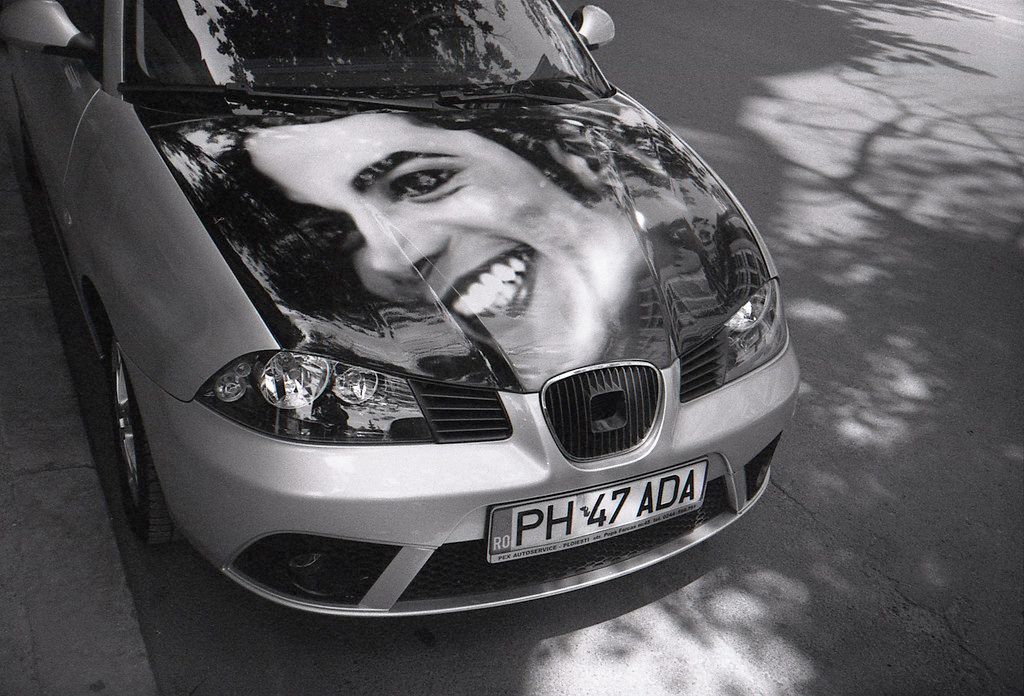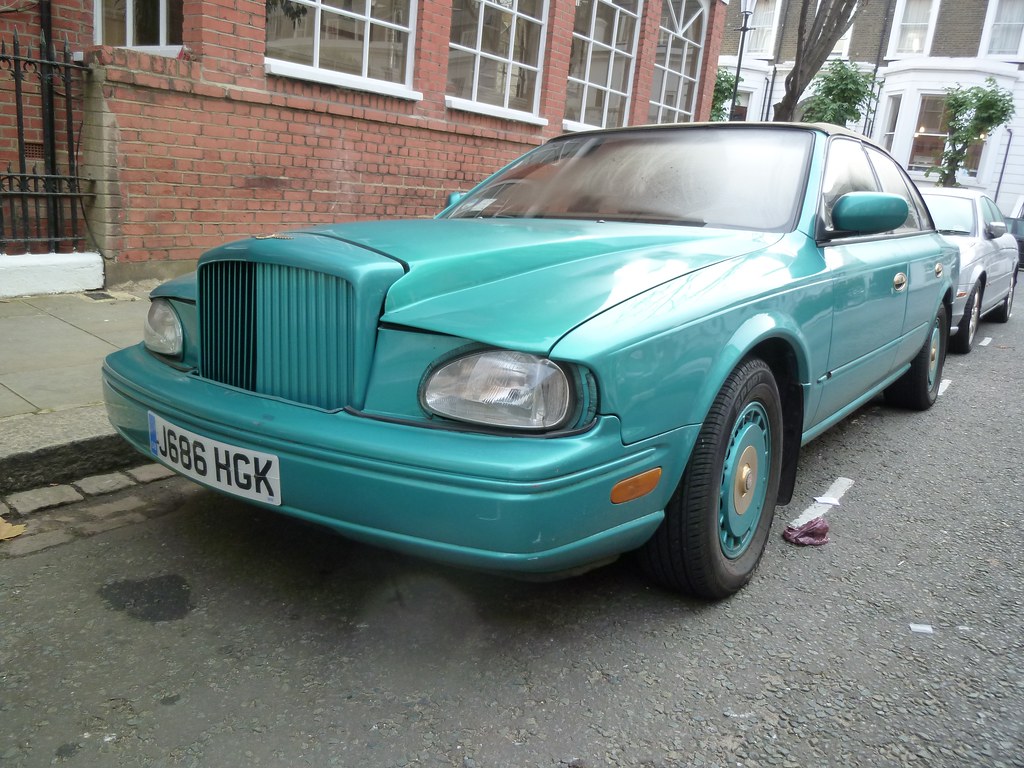
In the vast and often-glorious tapestry of automotive history, we celebrate masterpieces of engineering and design – the sleek lines of a Ferrari, the rugged utility of a Land Rover, the understated elegance of a classic Porsche. These are the cars that grace magazine covers and concours lawns, vehicles that inspire passion and admiration. But then, there are the others. The ones that, with a bewildering lack of self-awareness, dared to roll off the production line looking like they’d lost a fight with a scrap metal compactor. We’re talking about the truly, profoundly, unapologetically ugly.
Now, one might argue that beauty is in the eye of the beholder, and to some extent, that’s true. Art is subjective, and what one person considers an acquired taste, another might champion as avant-garde. However, when it comes to the cars we’re about to delve into, that argument pretty much collapses under the sheer weight of their visual misfortune. These aren’t just quirky; they are automotive oddities that manage to achieve near-universal agreement on their aesthetic missteps, making us question everything we thought we knew about design.
So, buckle up, because we’re taking a joyride through the annals of automotive blunders, a glorious parade of vehicles that prove even with exhausting research, design, and focus groups, sometimes an automaker just gets things spectacularly, jaw-droppingly wrong. Prepare yourself for a journey filled with baffling choices, questionable proportions, and enough plastic cladding to make a landfill blush. Let’s explore the cars that, frankly, should have stayed safely locked away in the garage.
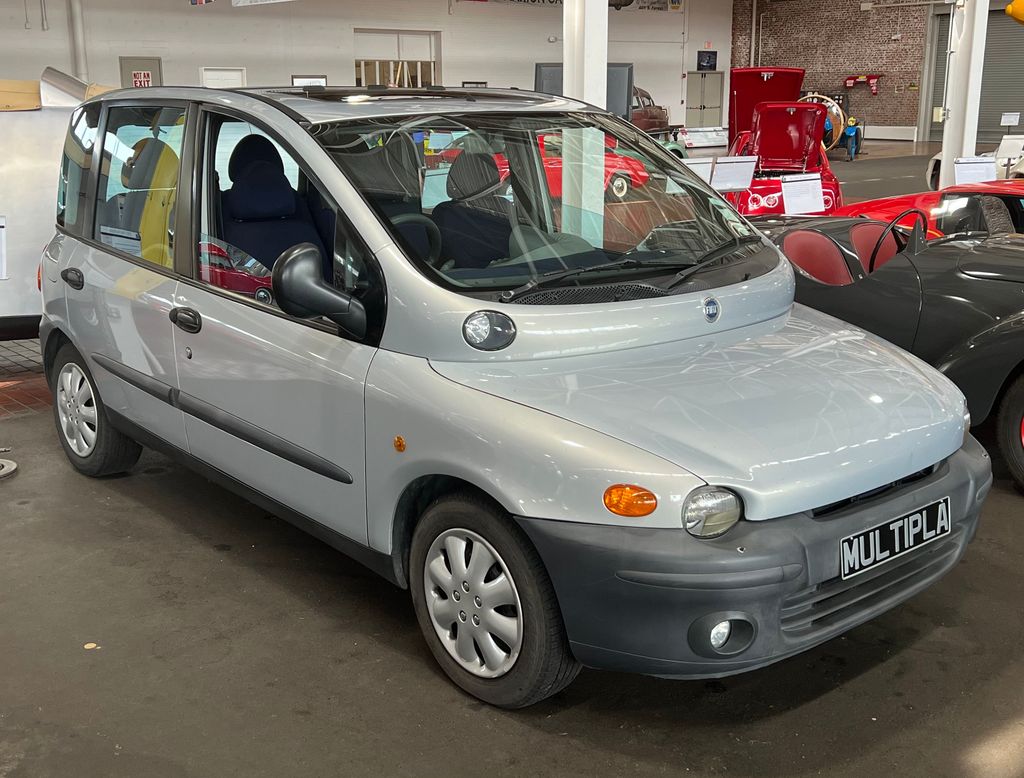
1. **1998 Fiat Multipla**Behold, the Fiat Multipla, a vehicle that doesn’t just push the boundaries of design; it obliterates them, then drives over the rubble with a gleeful disregard for conventional aesthetics. It appears to have been designed during a fever dream after consuming expired Italian cheese, a vision so peculiar that it immediately earns its place in the hall of automotive infamy. Its most striking feature, undeniably, is that bizarre double-stacked front end, which gives it the unsettling look of a car with a second, tumor-like growth emerging incongruously from its hood.
This isn’t just an unconventional grille; it’s a design choice that screams ‘experiment gone rogue.’ The bulbous windshield, coupled with those bug-eyed headlight arrangements, doesn’t so much create a friendly face as it evokes the image of a mutant frog that somehow managed to escape from a nuclear power plant. It truly is a sight to behold, a testament to a design team that, it seems, was challenged to create something that would make small children cry, and succeeded beyond their wildest, most unsettling expectations.
What makes the Multipla such a persistent topic of conversation – beyond its polarizing looks – is its remarkable functionality. Despite its footprint being not much bigger than a supermini, it could easily seat six people, offering clever space-saving solutions that were genuinely impressive. Yet, for all its practical brilliance, it was always, undeniably, let down by those looks. It’s unquestionably an ugly thing, but as time has passed, its very ugliness has become a reason to ironically love it.
Read more about: The Road to Ruin: 15 Foreign Fails That America Just Couldn’t (or Wouldn’t) Understand
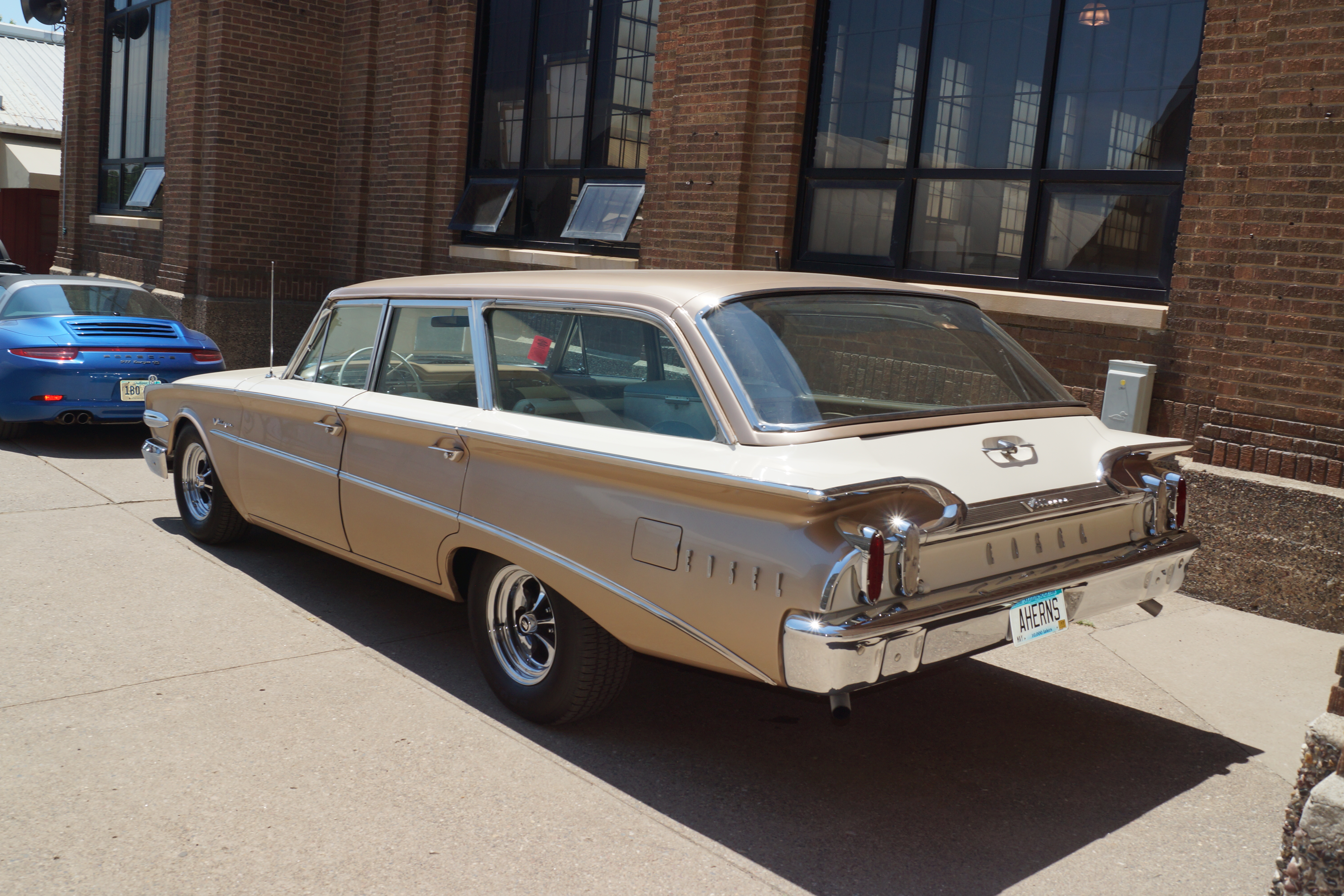
2. **1960 Edsel Villager**Ah, the Edsel. A name synonymous with corporate folly and a spectacular market rejection. By 1960, Ford was making its last desperate gasp to salvage the Edsel disaster, and with the Villager wagon, they somehow managed to make things even worse. It’s a remarkable feat to take an already ill-fated brand and cap it off with a design that embodies everything that made Americans collectively say, “thanks, but no thanks.”
While they did attempt to tone down the infamous “horse collar” grille – a feature that had previously graced the Edsel with a perpetual look of equine discomfort – they seemingly compensated by turning the entire rear end into a chrome-drenched modern art installation gone wrong. Those rocket-inspired taillights, for instance, look less like a sophisticated piece of automotive illumination and more like they were brazenly stolen from a forgotten carnival ride, slapped on with a desperate plea for attention.
Adding to the visual chaos, the side trim of the Villager appears to be in an existential crisis, quite literally trying to escape the vehicle entirely, as if the car itself knew it was a lost cause and its components were attempting to flee the scene. Even with its slightly more subdued front end in this final year, this wagon still manages to embody every misstep, every questionable decision, that cemented the Edsel’s place in history. It’s like watching the last episode of a TV show that got canceled for very good reason, leaving you with a sense of morbid fascination.
Read more about: Gearhead Dreams: 15 Iconic Defunct Car Brands We Desperately Want Back on the Road
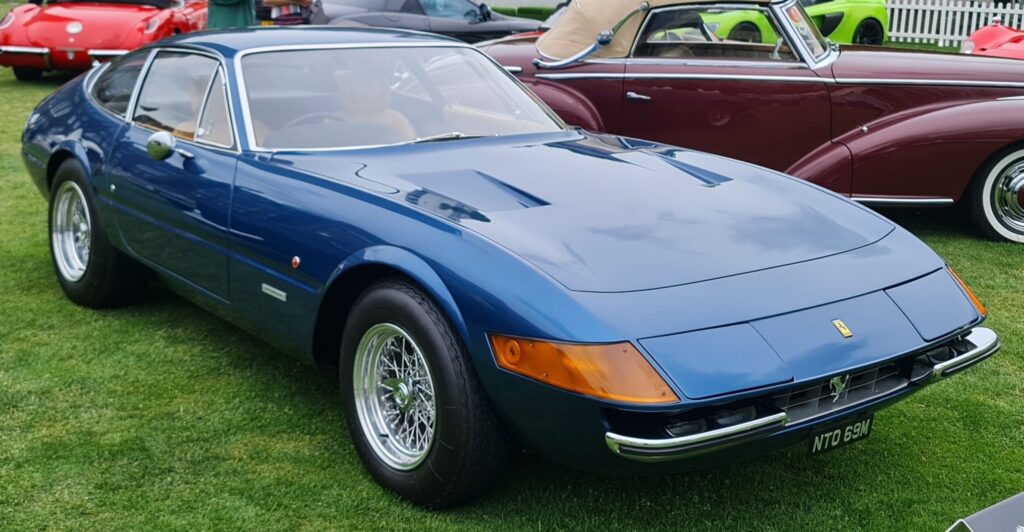
3. **1969 Ferrari 365 GTB/4 Daytona Shooting Brake**Feast your eyes upon what can only be described as the automotive equivalent of giving Michelangelo’s David a mullet. Seriously, someone took one of Ferrari’s most elegant, most iconic, most breathtaking designs – the sublime 365 GTB/4 Daytona – and decided what it *really* needed was a greenhouse extension. The result is a ‘Shooting Brake’ that looks like it was conceived during a heated argument between a passionate Italian sports car designer and an utterly bewildered British station wagon enthusiast.
This isn’t merely a conversion; it’s an act of automotive blasphemy. The rear glass installation, in particular, has all the subtlety of a crystal palace bolted onto a missile, completely disregarding the flowing, purposeful lines that defined the original Daytona. It stands as a stark, glittering monument to the fact that even Italian design mastery, a benchmark for beauty, apparently has its limits, or at least, its moments of profound, head-scratching aberration.
One can only imagine the legendary Enzo Ferrari’s reaction upon seeing this creation. One suspects it would have been the closest the automotive world has ever come to witnessing an Italian giving up on hand gestures entirely, simply because words, and indeed even exasperated hand-waving, would have been insufficient to convey the depth of his dismay. It’s a unique piece, undoubtedly, but its uniqueness stems less from innovation and more from a daring commitment to questionable taste.
Car Model Information: 2017 Maserati Levante S
Name: Ferrari 365 GTB/4,and GTS/4 “Daytona”
Caption: 1973 Ferrari 365 GTB/4
Manufacturer: Ferrari
Production: GTB/4: 1968–1973 (1,284 produced),GTS/4: 1971–1973 (122 produced)
Assembly: Maranello
Designer: Leonardo Fioravanti (engineer)
Class: Grand tourer
BodyStyle: berlinetta,Roadster (automobile)
Layout: Front-engine, rear-wheel-drive layout
Engine: Ferrari Colombo engine,V12 engine
Transmission: Manual transmission
Wheelbase: 2400 mm
Abbr: on (GTB/4, dry)
Length: 4425 mm
Width: 1760 mm
Height: 1245 mm
Weight: 1200 kg
Predecessor: Ferrari 275#275 GTB/4,Ferrari 365#365 GTC/GTS
Successor: Ferrari Berlinetta Boxer,Ferrari 550 Maranello
Sp: uk
Categories: 1970s cars, All articles with unsourced statements, Articles with hAudio microformats, Articles with short description, Articles with unsourced statements from April 2021
Summary: The Ferrari Daytona is a two-seat grand tourer produced by Ferrari from 1968 to 1973. It was introduced at the Paris Auto Salon in 1968 to replace the 275 GTB/4, and featured the 275’s Colombo V12 with a larger cylinder bore for 4,390 cc (4.4 L; 267.9 cu in). It was offered in berlinetta and spyder forms. The car came in two variants: the 365 GTB/4 coupe, and the 365 GTS/4 convertible.
The Daytona was succeeded by the mid-engined 365 GT4 Berlinetta Boxer in 1973.
Get more information about: Ferrari Daytona
Buying a high-performing used car >>>
Brand: Ferrari Model: 365 GTB/4 Daytona
Price: $20,995 Mileage: 62,696 mi.
Read more about: Golfer Ian Poulter’s Legendary $25 Million Car Collection: A Deep Dive into His Elite Ferraris and High-Performance Machines

4. **1989 Citroën BX**The Citroën BX is what happens when you let a ruler-obsessed geometry teacher, perhaps during an existential crisis, design a car. It’s not just angular; it’s a relentless collection of harsh angles and flat surfaces that makes it appear as though someone tried to origami-fold a car out of a sheet of metal but, crucially, gave up halfway through the complex process. The result is a visual cacophony that struggles to find any harmonious lines.
Every panel seems to be a testament to the straight edge, creating a blocky, uninspired form that lacks the organic flow typically associated with automotive beauty. This rigid design philosophy extends to the interior as well, with a dashboard that appears to have been directly inspired by a broken calculator, prioritizing sharp lines and stark functionality over any hint of ergonomic grace or visual warmth. It’s an interior that offers little comfort to the eye.
Even by Citroën’s famously eccentric standards – a company, let’s remember, known globally for its unapologetically weird and wonderfully different designs – the BX manages to stand out. It looks like it’s trying far too hard to be different, yet in its earnest pursuit of distinctiveness, it somehow achieves all the visual charm and compelling presence of a mundane mail sorting facility. It’s a car that dared to be different, but in doing so, became memorable for all the wrong, angular reasons.
Read more about: Unearthing Hidden Gems: 13 Forgotten Hot Hatches from the ’70s, ’80s, and ’90s That Still Go Like Hell

5. **1947 Crosley CC**Behold the 1947 Crosley CC, a diminutive automobile that serves as irrefutable proof that good things don’t always, in fact, come in small packages. Looking disconcertingly like a nervous child’s very first attempt at drawing a car, this miniature monstrosity somehow manages the perplexing feat of appearing both entirely too tall and awkwardly too narrow at the very same time. Its proportions are a masterclass in how to get things visually out of whack.
In the immediate post-war America, a booming era where bigger was decidedly, and enthusiastically, better, the Crosley CC had all the commanding presence and gravitational pull of a mail-order toy that had unfortunately arrived slightly dented in transit. It just couldn’t compete with the grander, more opulent machines emerging from Detroit, fading into the background like a forgotten trinket.
It’s as if someone painstakingly described the complex concept of a “car” to a designer who had only ever seen vehicles peeking through a keyhole, then, for good measure, inexplicably told them to make it even smaller. The unfortunate result is a vehicle that offers less in the way of an “economy car” and a great deal more in terms of an “economy of style.” It’s a design that pinched pennies not just in its manufacturing, but in its visual appeal too.
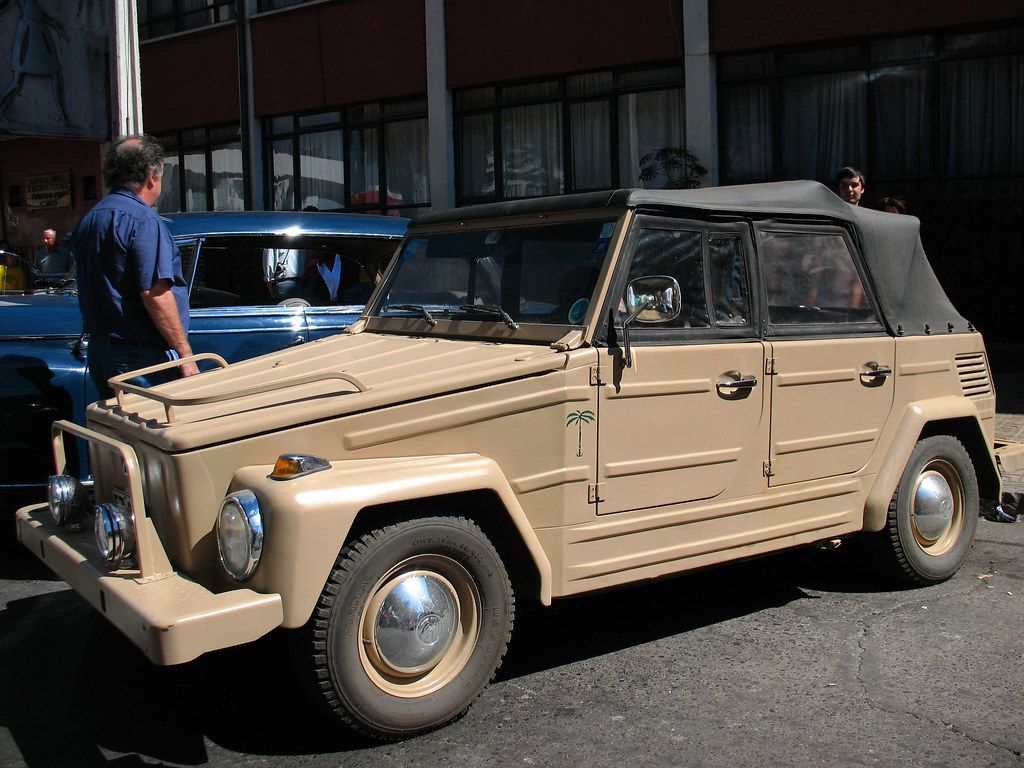
6. **1973 Volkswagen Thing**Ah, the Volkswagen Thing. Here we have irrefutable proof that even the Germans, renowned for their precision engineering and often understated, functional design, can occasionally, just occasionally, have a truly terrible sense of humor when it comes to automotive aesthetics. This vehicle looks precisely like the outcome of a child’s very first attempt at drawing a car, using nothing more complex than a ruler, resulting in an automotive brick that somehow manages to make a simple cardboard box seem like it possesses the aerodynamic sophistication of a jet fighter by comparison.
With its perfectly vertical windshield, which seems to defy any notion of wind resistance, and those pancake-flat body panels, the Thing appears to have been meticulously designed by someone who firmly believed that “military surplus meets beach buggy” was not only a viable concept but a winning, aesthetically pleasing combination. The sheer uncompromising flatness of its surfaces suggests a defiant rejection of curves, aerodynamics, and, indeed, visual softness.
The sheer audacity of Volkswagen literally naming it “Thing” is almost a stroke of genius, albeit born from apparent surrender. It suggests that even the venerable German automaker’s own designers, after much deliberation and probably quite a bit of head-scratching, simply couldn’t quite figure out what this geometric disaster was truly supposed to be. It’s an exercise in stark, utilitarian ugliness that, ironically, makes it unforgettable.
Car Model Information: 1974 Volkswagen Thing
Caption: Civil version with military shrub removers and custom seats
Name: Volkswagen Type 181/182
Manufacturer: Volkswagen
Aka: Volkswagen Type 181 (LHD) Volkswagen Type 182 (RHD),Sold as:,Volkswagen Thing (United States),Volkswagen Camat (Indonesia),Volkswagen Safari (Mexico),Volkswagen Trekker (UK),Volkswagen Pescaccia (Italy)
Production: cite book
Assembly: Wolfsburg
Predecessor: Volkswagen Kübelwagen
Successor: Volkswagen Iltis
Class: Military vehicle
BodyStyle: Cabriolet (automobile)
Layout: Rear-engine, rear-wheel drive layout
Engine: Flat-four engine
Transmission: Manual transmission
Wheelbase: 2400 mm
Abbr: on
Length: 3780 mm
Width: 1640 mm
Height: 1620 mm
Weight: 910 kg
Categories: All articles needing additional references, All articles that may contain original research, Articles needing additional references from August 2019, Articles that may contain original research from April 2017, Articles with short description
Summary: The Volkswagen Type 181 is a two-wheel drive, four-door convertible, manufactured and marketed by Volkswagen from 1968 until 1983. Originally developed for the West German Army, the Type 181 also entered the civilian market as the Kurierwagen (“courier car”) in West Germany, the Trekker (RHD Type 182) in the United Kingdom, the Thing in the United States and Canada (1973–74), the Safari in Mexico and South America, and Pescaccia in Italy. Civilian sales ended after model year 1980.
Manufactured in Wolfsburg, West Germany (1968–1974), Hannover, West Germany (1974–1975), Emden, West Germany (1975–1978), Puebla, Mexico (1970–1980), and Jakarta, Indonesia (1972–1980), the Type 181 shared its mechanicals with Volkswagen’s Type 1 (Beetle) and the pre-1968 Volkswagen Microbus, its floor pan with the Type 1 Karmann Ghia, and its concept with the company’s Kübelwagen, which had been used by the German military during World War II.
The overall configuration loosely recalls the chic, open beach cars of the 1960s, including the BMC Mini Moke, Fiat Ghia Jolly, Renault Rodeo, Citroën Méhari and Meyers Manx. All four doors were removable and interchangeable, the windshield folded flat, and the convertible roof could be removed for al fresco driving. The spartan interior featured vinyl covered bucket seats, painted sheet metal, drain holes and perforated rubber mats. A fiberglass hardtop and trunk-mounted auxiliary heater were optional.
Get more information about: Volkswagen Type 181
Buying a high-performing used car >>>
Brand: Volkswagen Model: Thing
Price: $24,999 Mileage: 45,382 mi.
Read more about: Buckle Up, Boomers! 12 Legendary Rides from Your Youth That Are STILL a Total Blast to Drive
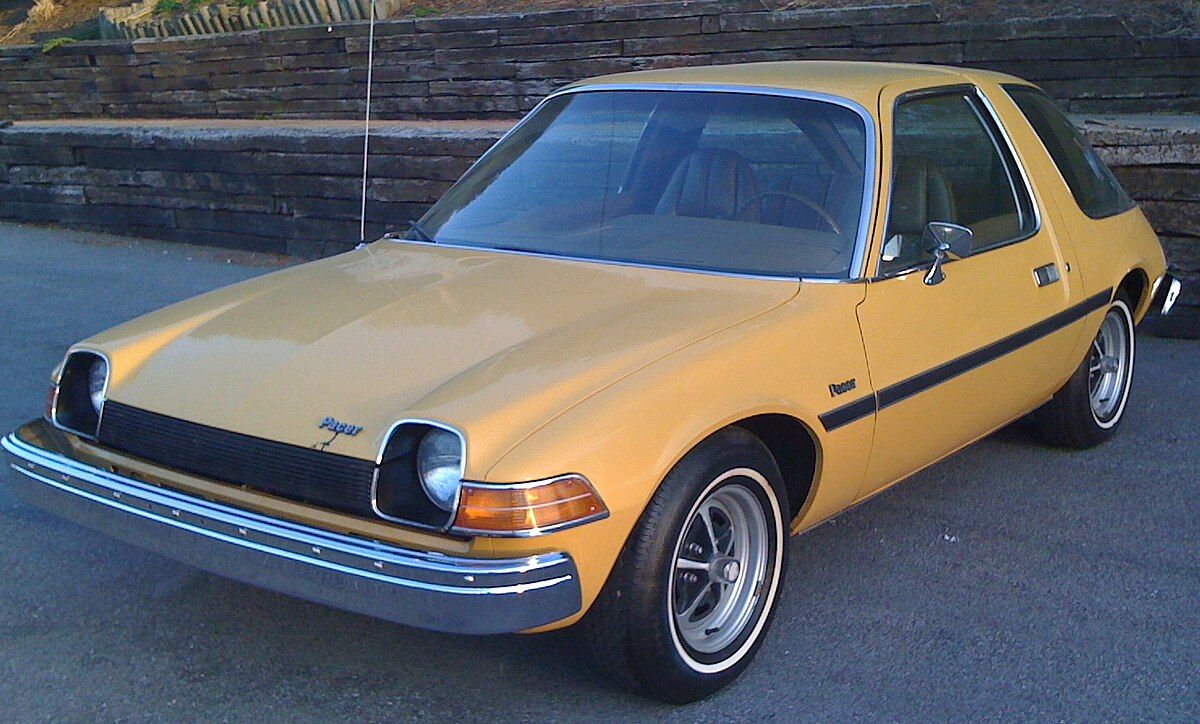
7. **1975 AMC Pacer**Ah, the AMC Pacer… the car that conclusively proves even the most adventurous of the 1970s drug culture had its discernible limits when it came to inspiring automotive design. Marketed with a hopeful, if ultimately misleading, tagline as “the first wide small car,” it actually looks more like what happens when you unthinkingly microwave a regular, perfectly sensible car for just a little too long. The result is a bloated, misshapen blob that defies logical categorization.
With its iconic, almost comically exaggerated, fishbowl windows and those undeniably bloated proportions, the Pacer appears to be perpetually suffering from some peculiar sort of automotive water retention, giving it a perpetually swollen and uncomfortable look. AMC, in a moment of baffling innovation, claimed its asymmetrical doors were a stroke of design genius. In reality, they simply made the car appear as if it were permanently having a rather unfortunate, lopsided stroke.
The interior experience was equally singular; it was so glass-heavy that driving one during a warm summer day felt precisely like being trapped inside a greenhouse during a solar flare, offering an intense, unescapable warmth. While the 1970s gifted us with an abundance of questionable and often baffling designs across the automotive landscape, the Pacer stands out, head and shoulders above the rest, as a truly special kind of awful, a unique monument to a decade of questionable taste.
Read more about: Gear Grinders and Road Rogues: Unmasking the 1970s’ Most Hated Cars That Still Haunt Our Automotive Dreams
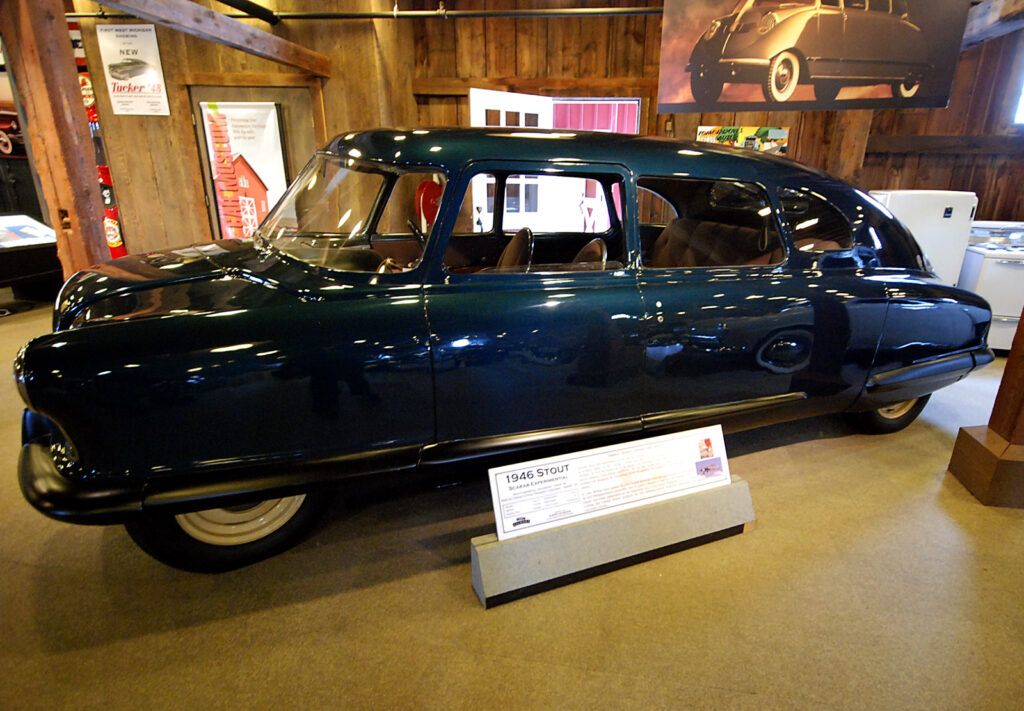
8. **1937 Stout Scarab**If you thought cars had to look like, well, *cars*, then you hadn’t encountered the 1937 Stout Scarab. This contraption looks less like an automobile and more like what would happen if a confused cockroach tried to design a Victorian parlor room on wheels. It’s an art deco nightmare that somehow blends an insect’s streamlined ambition with your great-grandmother’s sitting room sensibilities.
Its bug-eyed headlights and incredibly rounded, beetle-like shell left no doubt as to how it earned its name, though being named after an Egyptian dung beetle probably didn’t help its street cred. Despite its peculiar aesthetics, it pioneered the basic shape of the modern minivan, offering surprising practicality. Imagine a family hauler designed with the grace of a dung beetle attempting a tango in ill-fitting spats.
Originally conceived with a rear-mounted Ford V8 and an aluminum body, its flat-fronted design gave it the look of a miniature bus. The interior was remarkably spacious, a testament to its forward-thinking approach. However, the public wasn’t quite ready for such a radical and visually challenging vision, proving that groundbreaking innovation sometimes needs a touch of conventional good looks to truly resonate.
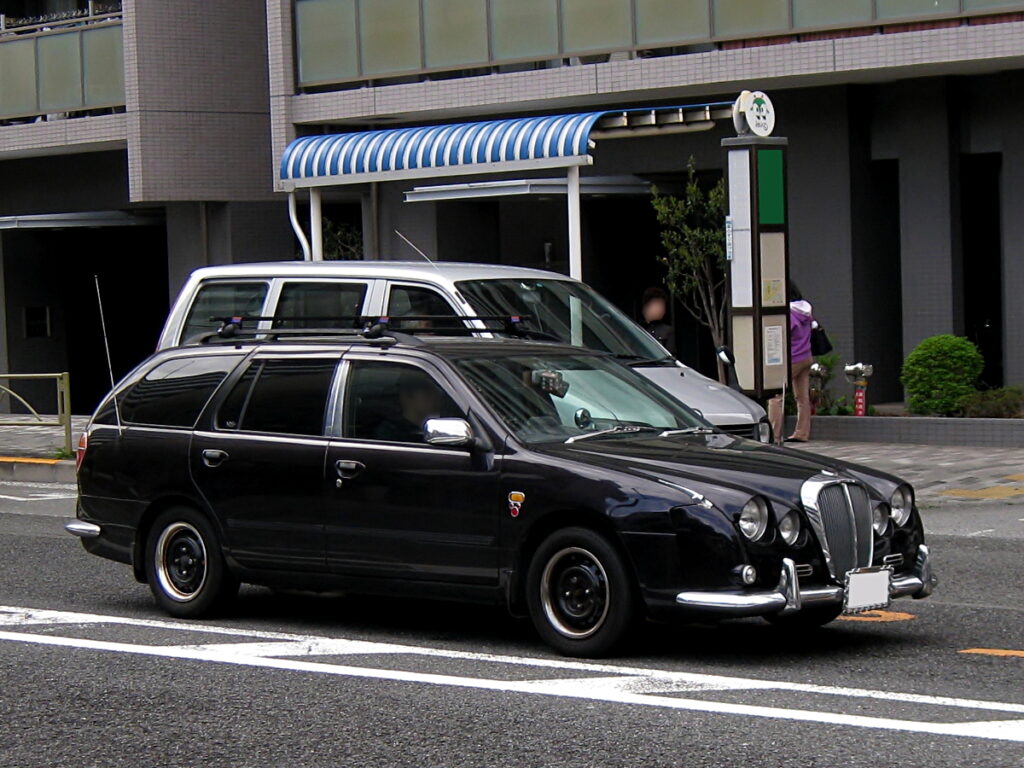
9. **1998 Mitsuoka Ryoga**Moving on, prepare yourself for the 1998 Mitsuoka Ryoga, a car that embodies identity confusion like no other. This isn’t just a car; it’s a profound existential crisis on four wheels, looking precisely like the result of an ill-advised affair between a classic Jaguar Mark 2 and a mundane Nissan Sunny in a back-alley chop shop. It’s the automotive equivalent of wearing a tuxedo jacket with jogging bottoms – an ensemble that screams, “I tried, but I really didn’t understand the assignment.”
The phrase “business in the back, party in the front” has rarely been so tragically misapplied. That immense, chrome-laden grille desperately tries to claim royal heritage, all while painfully aware that its underlying DNA belongs to an unassuming Japanese economy car. The “party” in the front feels less like a celebration and more like a polite, deeply awkward village fête.
The transition from that grand, almost pretentious, classic-inspired front to the utterly prosaic ’90s Japanese sedan rear is jarring. It’s about as smooth as a teenager’s first catastrophic attempt at mixing sophisticated cocktails. The Ryoga is a testament to the idea that trying too hard to be two things at once often results in being a rather unsuccessful version of neither.
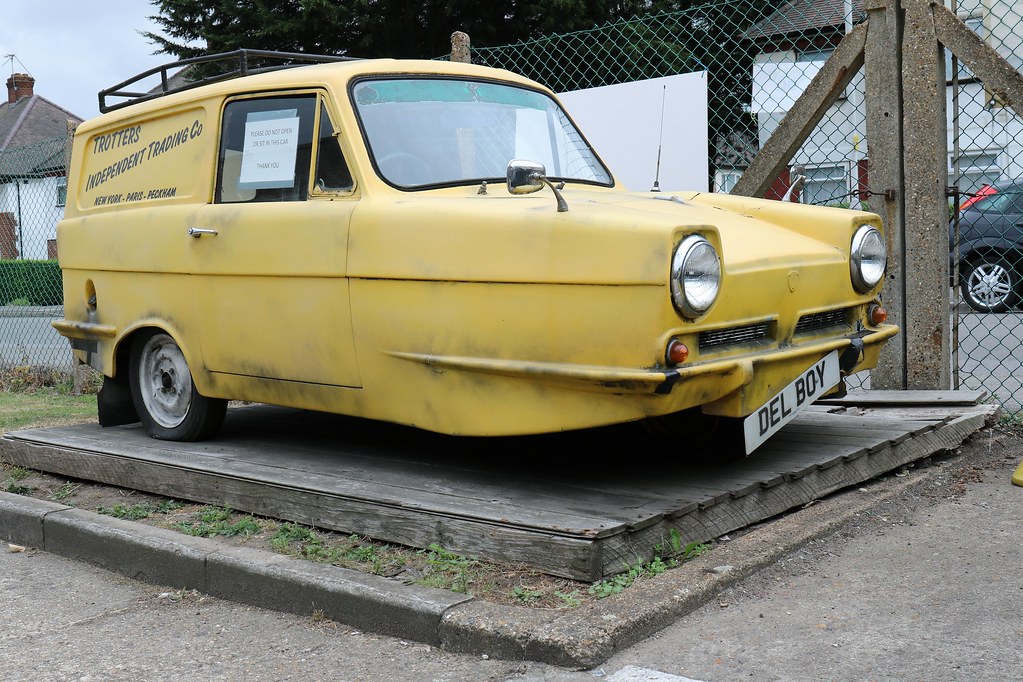
10. **1972 Reliant Regal Supervan**And now, for a vehicle that proves sometimes, even the simplest concepts can go spectacularly, and hilariously, wrong: the 1972 Reliant Regal Supervan. Let’s be honest, this thing looks exactly like what would happen if a garden shed grew wheels, developed wanderlust, and then boldly decided it wanted to identify as a delivery vehicle. It’s a three-wheeled catastrophe that makes you wonder if the designers genuinely thought “stability” was merely a fancy word for the nearest horse barn.
With its incredibly narrow front track and a body that’s unmistakably top-heavy, the Regal Supervan looks perpetually ready to topple over at the mere *thought* of a corner. It’s the automotive equivalent of trying to balance a large, precarious egg on an alarmingly thin toothpick, then sending it on a cross-country journey. Every trip in a Supervan is less a drive and more a white-knuckle test of physics and sheer dumb luck.
Only the British, in their infinite wisdom, could create a vehicle that makes driving in a perfectly straight line feel like an extreme sport. The Supervan isn’t just an ugly car; it’s a rolling punchline, a testament to a design philosophy that prioritized… well, providing endless amusement to anyone observing its precarious progress.
Car Model Information: 2022 Honda Civic Sport
Name: Reliant Regal
Caption: 1956 Reliant Regal (Mk III)
Manufacturer: Reliant Motors
Production: 1952–1973
Assembly: Tamworth, Staffordshire
Class: City car
Layout: Front-engine, rear-wheel-drive layout
Wheelbase: 1931 mm
Abbr: on
Length: 3429 mm
Width: 1486 mm
Height: 1448 mm
Weight: 445 kg
Predecessor: Reliant Regent
Successor: Reliant Robin
Sp: uk
Categories: All Wikipedia articles written in British English, All articles needing additional references, Articles needing additional references from March 2021, Articles with short description, CS1 maint: location missing publisher
Summary: The Reliant Regal is a small three-wheeled car and van that was manufactured from 1952 to 1973 by the Reliant Motor Company in Tamworth, England, replacing the earlier Reliant Regent three-wheeled cyclecar van which had its origins in a design bought by Reliant from the Raleigh Bicycle Company. As a three-wheeled vehicle having a lightweight (under 7 cwt, 355.6 kg) construction, under UK law it is considered a “tricycle” and can be driven on a full (class A) motorcycle licence. In 1962, with the release of the Reliant Regal 3/25, van and estate versions with a side-hinged rear door were marketed as the Reliant Supervan.
Get more information about: Reliant Regal
Buying a high-performing used car >>>
Brand: Reliant Model: Regal Supervan
Price: $20,160 Mileage: 111,869 mi.

11. **2001 Pontiac Aztek**Ah, the 2001 Pontiac Aztek. This isn’t just a car; it’s arguably the most notorious automotive design catastrophe of the 21st century, a vehicle so utterly bewildered in its aesthetics that it makes us question the very foundations of taste. It appears to have been designed not by coherent minds, but by a committee of blindfolded executives, haphazardly throwing random car parts at a whiteboard and then simply building whatever unfortunate configuration resulted.
Its grotesque proportions and vast swathes of bizarre, grey plastic cladding create an utterly ungainly mess. The Aztek looks less like a single, cohesive design and more like two entirely different cars having a violent head-on collision, then merging into one profoundly awkward, aesthetically challenged hybrid. It shattered the rules of automotive design, reassembling them in the most incorrect, unsettling order possible.
Even a starring role in *Breaking Bad* couldn’t quite rescue the Aztek’s reputation, though it perfectly embodied Walter White’s initial desperate, suburban-dad persona. While supposedly very functional, functionality can only get you so far when your primary visual impression is one of profound, unadulterated ugliness.
Car Model Information: 2003 Pontiac Aztek Base Fwd 4dr SUV
Name: Pontiac Aztek
Manufacturer: General Motors
Production: July 2000 – December 2004
Assembly: Ramos Arizpe
Designer: Tom Peters (chief designer: 1997)
Class: Mid-size crossover SUV
BodyStyle: SUV
Platform: GM U platform
Related: Buick Rendezvous
Layout: Front-engine, front-wheel-drive layout
Engine: General Motors 60° V6 engine#LA1,V6
Transmission: GM 4T65-E transmission,Automatic transmission
Wheelbase: 108.3 in (2,751 mm)
Length: 182.1 in (4,625 mm)
Width: 73.7 in (1,872 mm)
Height: 66.7 in (1,694 mm)
Weight: 3,779–4,043 lb (1,714–1,834 kg)
Predecessor: Pontiac Sunrunner
Successor: Pontiac Torrent
ModelYears: 2001–2005
Categories: All-wheel-drive vehicles, All articles needing additional references, All articles with unsourced statements, Articles needing additional references from October 2013, Articles with short description
Summary: The Pontiac Aztek is a mid-size crossover SUV marketed by General Motors introduced in 2000 for the model years 2001 through 2005. As a four-door crossover with front-wheel drive and optional all-wheel drive, the Aztek featured a four-speed automatic transmission with a V6 engine. Marketed by Pontiac as a “sport recreational vehicle,” the Aztek used a shortened platform shared with GM’s minivans (e.g., the Pontiac Montana) featuring 94 cubic feet of cargo room with its rear seats removed. The design employed conventional rear outswing doors rather than sliding doors, and a split rear tailgate, the lower section formed with seat indentations and cupholders. Other features included a front center console that doubled as a removable cooler, optional rear stereo controls in the cargo area, optional sliding cargo floor with grocery compartments, and optional camping package with an attachable tent and air mattress.
Get more information about: Pontiac Aztek
Buying a high-performing used car >>>
Brand: Pontiac Model: Aztek
Price: $1,499 Mileage: 157,677 mi.
Read more about: Automotive Icons Unraveled: The Definitive Account of 15 Star Brands and Models That Fell From Grace

12. **1961 Citroën Ami**Next up, from the land of haute couture and fine wines, comes a car that looks like it was designed by someone who had only ever experienced automobiles through a heavily distorted funhouse mirror: the 1961 Citroën Ami. This isn’t merely unconventional; it’s an exercise in utter aesthetic aggression, a vehicle that stares back at you with a perpetual expression of confused bewilderment, much like a pug trying desperately to decipher fine print.
Its signature reverse-slanted rear window and bizarrely canted, almost dead-eyed headlights give the Ami a hunched, awkward stance. The French, perhaps with a touch of sarcasm, called it the “Ami,” meaning “friend.” Yet, with those unsettling optics and that ungainly profile, it feels less like a friendly companion and more like that perpetually uninvited acquaintance who stubbornly refuses to leave.
This isn’t elegant avant-garde design; it’s more akin to someone accidentally sitting on a meticulously crafted clay model just before production. Then, in a collective moment of Gallic shrug, everyone simply decided not to fix it. The Ami embodies a design philosophy that dares buyers *not* to love it, a commitment to distinctiveness so profound it is quintessentially French in its charmingly baffling awfulness.
Read more about: Investment Guide: The 14 Classic Cars That Have Consistently Appreciated by Over 50% in the Last Decade

13. **1998 Daihatsu Move**Finally, let us cast our gaze upon the 1998 Daihatsu Move, a vehicle that appears to be the unfortunate outcome of an office mishap involving a photocopier. Specifically, it looks like someone attempted to photocopy a regular car at a reduced 75% scale, but then accidentally squished it vertically. The result is a car with tiny wheels supporting a towering, disproportionate body, giving it the whimsical, yet deeply unsettling, appearance of a loaf of white bread attempting to balance precariously on four small button mushrooms.
The front end of the Daihatsu Move wears an expression of permanent bewilderment, as if it’s just as confused about its own existence and questionable proportions as any onlooker would be. Its entire aesthetic is so cartoonishly wrong, so profoundly out of whack, that it genuinely seems like it should be starring in a children’s anime about talking cars, rather than attempting to navigate real roads with any semblance of dignity.
This isn’t just an economy car; it’s an economy of *logic*. It’s the automotive equivalent of someone deciding that the pinnacle of fashion involves wearing towering platform shoes with an equally absurd, oversized top hat. The Daihatsu Move is a quirky, baffling, and undeniably ugly little machine that, despite its practical intentions, leaves you wondering how such a visually peculiar creation ever, well, *moved* from the drawing board to the production line.
**The enduring legacy of automotive audacity**
Read more about: Beyond the Mainstream: 15 Wild Classic Car Features Automakers Left in the Dust and Why You Won’t See Them Again
As we pull into the metaphorical garage at the end of our rather bumpy, aesthetically challenging journey, it’s clear that the automotive world isn’t solely defined by its sleek masterpieces and engineering triumphs. Indeed, often it’s the spectacular misfires, the vehicles that dared to be different – or perhaps just dared to be bewilderingly ugly – that leave the most indelible mark. These cars, from the strangely avant-garde to the undeniably awful, remind us that even with the most exhaustive research, focus groups, and design talent, sometimes, an automaker simply gets things spectacularly, jaw-droppingly wrong. They challenge our perceptions, ignite conversations, and, in their own unique way, add an incredibly rich, if often amusing, layer to the storied tapestry of automotive history. And for that, in a perverse sort of way, we salute them. Even if we wouldn’t want to be seen driving them.

